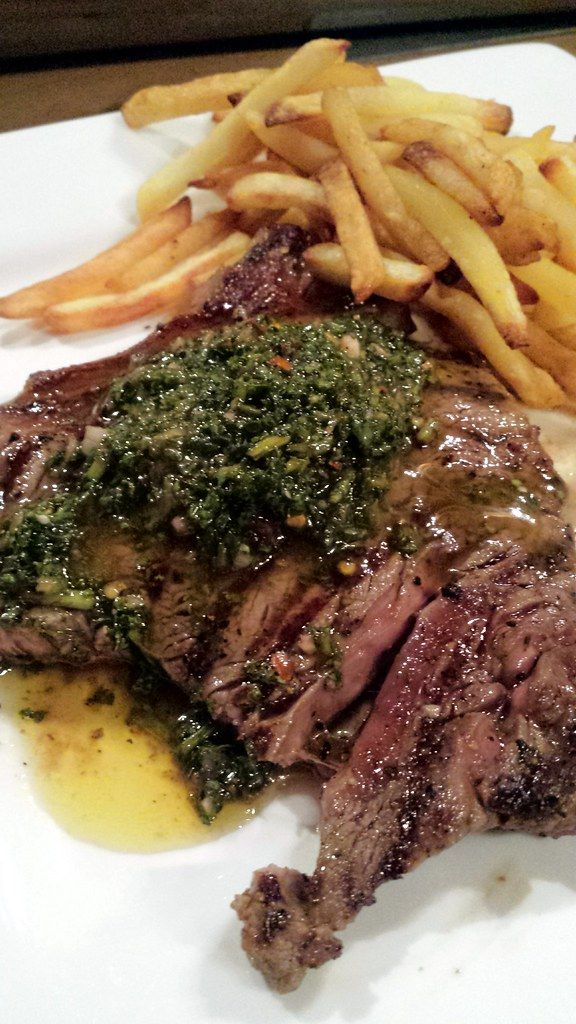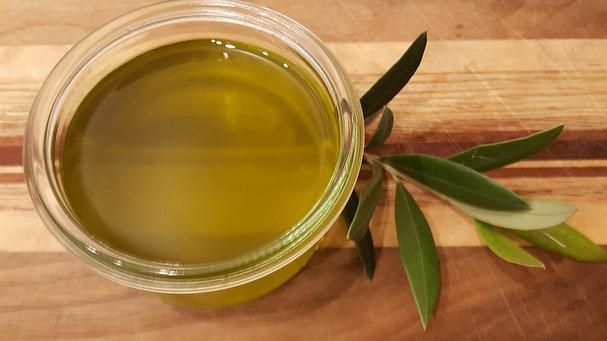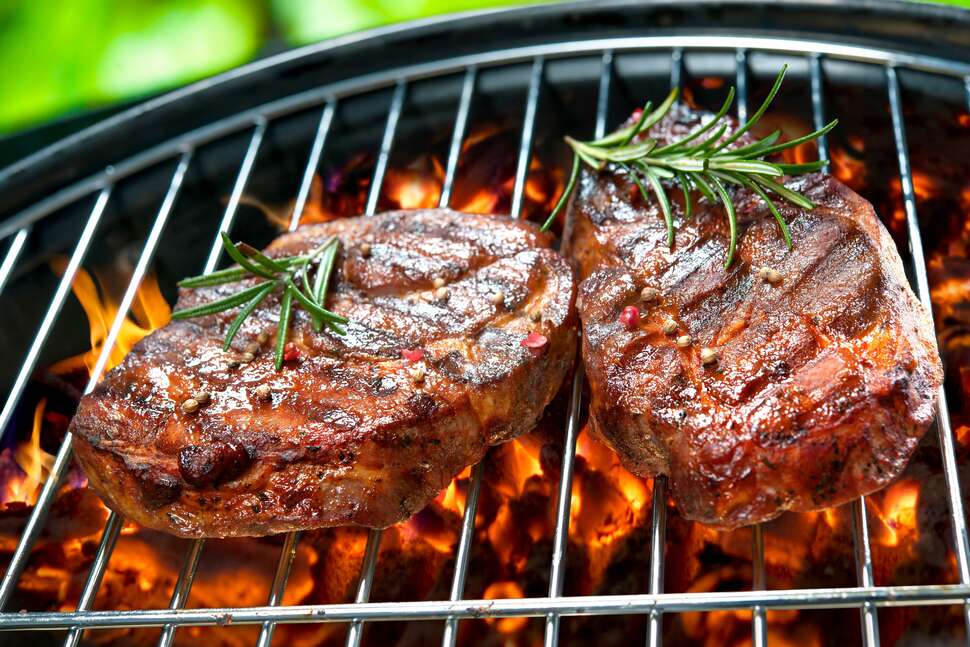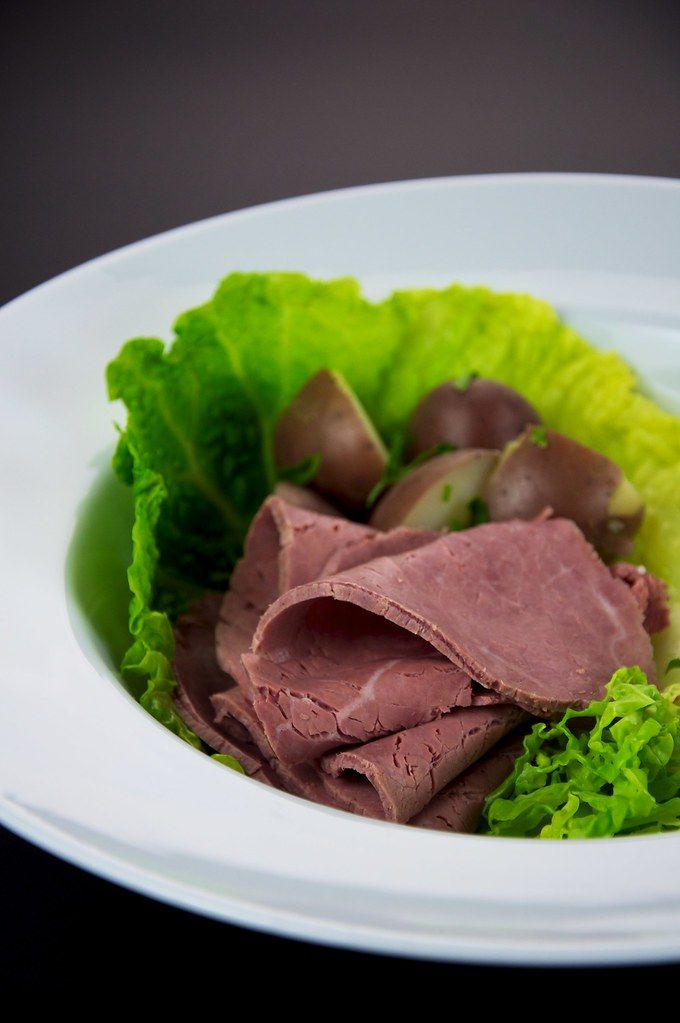
There’s a universally acknowledged truth among food enthusiasts: few things rival the sheer delight of a perfectly grilled steak. That mouth-watering combination of a deeply seared, flavorful crust and a tender, juicy interior is the hallmark of culinary excellence, a standard often set by high-end restaurants. Yet, the journey to replicating that steakhouse experience in your backyard, with a ribeye or filet mignon, often feels fraught with hidden challenges that prevent home cooks from reaching their full grilling potential.
Indeed, what often seems like a straightforward task of putting meat on heat can quickly become an intricate dance of variables, where even minor missteps can significantly impact the final result. From the initial selection of the beef to the exact moment it leaves the grill, every decision plays a pivotal role in shaping the steak’s texture, flavor, and overall succulence. It’s not rocket science, as many chefs will attest, but it certainly demands attention to detail and a scientific understanding of the processes at play.
To bridge the gap between enthusiastic home grilling and consistent, restaurant-quality outcomes, we’ve gathered professional insights from acclaimed chefs. They’ve generously shared their expertise on the most common mistakes made when grilling steak—and, more importantly, how to systematically avoid them. These chef-approved tips are designed to elevate your grilling prowess, starting with these fundamental errors in preparation and initial cooking that often go unnoticed.

1. **Ignoring the Specific Cut and Size of Steak**The journey to a perfectly grilled steak begins long before the meat ever touches the grates, specifically with an informed understanding of the cut itself. Not all cuts of beef are created equal, and their inherent characteristics, such as fat content and muscle fiber structure, dictate the optimal grilling approach. As Nickenford Joseph, Co-Executive Chef at Vinyl Steakhouse in New York, wisely points out, the key lies in comprehending “what each cut brings to the table.”
Take, for instance, the contrast between a ribeye or New York strip and a filet mignon or top round. Ribeye and New York strip are celebrated for their ample fat and marbling, which inherently render them flavorful and juicy under high heat. Leaner cuts like filet mignon, however, can dry out rapidly and thus demand a more delicate touch, perhaps involving marinating or slower cooking at a lower temperature to preserve their moisture. Matching the cooking method to the steak’s unique attributes is paramount for success.
Size also plays a significant role in grilling difficulty, as Executive Chef David Rose from Omaha Steaks explains. Larger cuts present a challenge in achieving even doneness throughout, requiring careful temperature management. Conversely, thinner cuts, such as skirt steak, cook incredibly quickly and are prone to burning if not closely monitored. Chef Rose recommends cooking skirt steak over high heat for a mere 2-3 minutes per side, aiming for a browned exterior that typically signals a medium-rare interior.
Furthermore, Andy Bowler, Executive Chef and Founder at Indulge Dining, stresses the importance of steak thickness for control over the cooking process. He advises opting for steaks that are “at least 1.5 inch thick so you can get a nice cook on it, because without that it’s either cooked or it’s not.” A thicker steak allows for a beautiful sear on the outside without overcooking the center, providing the necessary buffer to achieve that coveted brown exterior while maintaining a tender, juicy middle.
Read more about: Navigating the Shifting Sands: Why 9 Beloved Fast-Casual Chains Are Facing Customer Dissatisfaction and What It Means for the Industry’s Future

2. **Overlooking Beef Quality and Grading**The superior taste of restaurant-quality steak often stems from more than just expert preparation; it begins with the quality of the beef itself. High-end establishments meticulously select premium cuts, understanding that exceptional raw material is the bedrock of a superb final dish. The United States employs a voluntary beef grading system that serves as a valuable indicator of quality, primarily based on factors like texture and marbling.
The highest distinction, USDA Prime, is characterized by abundant marbling, which translates to exceptional juiciness and flavor. Following this is USDA Choice, which, while still excellent, features slightly less marbling than Prime. The leanest and toughest of the three, USDA Select, possesses the least marbling. Understanding these classifications empowers home cooks to make informed choices that directly impact their grilling results.
Ashley Lonsdale, a recipe developer and Chef-In-Residence at the ButcherBox, powerfully states, “Quality is a huge factor when grilling — if you don’t start with high quality, you won’t end with it.” She advocates for sourcing steak intentionally, recommending grass-fed beef for its distinct flavor profile. According to Chef Lonsdale, “Grass-fed steaks have an intense, deeply beefy flavor, which I prefer,” making them an undeniable choice for superior quality and taste.
Additionally, Andy Bowler reiterates the importance of marbling as the “biggest defining factor of the perfect grilling steak,” explaining that these white strands of fat render out during cooking, contributing significantly to both flavor and tenderness. While personal preference for boneless or leaner cuts is valid, the underlying message remains: “Buy the best steak that you can afford,” as Bowler emphasizes. Ultimately, investing in quality beef lays the essential groundwork for a truly outstanding grilled steak.

3. **Employing Inappropriate Cooking Oils**While steak naturally contains fat that renders into grease during grilling, this rendered fat alone is often insufficient to achieve a perfect sear or to prevent the meat from sticking stubbornly to the grates. Chef David Rose from Omaha Steaks highlights the dual role of cooking oil: not only as a binder for seasoning but also as a crucial lubricant to coat grill grates, particularly beneficial for more delicate cuts like filet mignon that are prone to adhesion.
The choice of cooking oil, however, is far from trivial, as oils differ significantly in flavor and, more critically, in their smoke points. The smoke point is the temperature at which an oil begins to break down, smoke, and impart an unpleasant, bitter taste to your food. Extra virgin olive oil, a kitchen staple for salads and finishing dishes, is notably unsuitable for high-heat steak grilling due to its relatively low smoke point of 320 degrees Fahrenheit.
When oils exceed their smoke point, they not only degrade the flavor of your steak but also release harmful compounds that have been linked to various health concerns. Since steaks are optimally grilled at high temperatures, selecting an oil with a robust smoke point becomes imperative to ensure even cooking and prevent scorching. The goal is to facilitate a beautiful crust without the acrid taste of burnt oil.
For grilling steak, you need an oil that can withstand the intense heat without breaking down. Avocado oil stands out as an excellent choice, boasting a high smoke point of 520 degrees Fahrenheit and a neutral flavor that won’t overpower the beef. Other reliable options include refined canola oil, which handles temperatures up to 400 degrees Fahrenheit, and sunflower oil, with a smoke point around 450 degrees Fahrenheit. Making this informed choice in oil can significantly impact the quality and healthfulness of your grilled steak.
Read more about: Mastering the Flame: A Comprehensive Scientific Guide to Unlocking Grilling Perfection

4. **Grilling Steak Directly from the Refrigerator Without Drying**One of the most frequently overlooked, yet fundamentally critical, pre-grilling steps is allowing your steak to come to room temperature and ensuring its surface is thoroughly dry. Grilling beef straight from the refrigerator creates a significant temperature differential, inevitably leading to uneven cooking. This often manifests as a steak that is overcooked on the exterior while remaining stubbornly undercooked in the center, characterized by an undesirable gray band.
One of the most frequently overlooked, yet fundamentally critical, pre-grilling steps is allowing your steak to come to room temperature and ensuring its surface is thoroughly dry. Grilling beef straight from the refrigerator creates a significant temperature differential, inevitably leading to uneven cooking. This often manifests as a steak that is overcooked on the exterior while remaining stubbornly undercooked in the center, characterized by an undesirable gray band.
Dennis Turcinovic, owner and managing partner of Delmonico’s Hospitality Group, whose restaurant famously created the Delmonico steak, emphasizes that bringing the steak to room temperature before grilling is “crucial.” This simple act helps to achieve “even cooking throughout and creates a sear.” Andy Bowler further illustrates this, explaining that cold meat, when subjected to sudden heat, creates a “brick wall of cold,” preventing heat from permeating evenly through the steak fibers.
While warming the steak is essential, it’s equally important to manage the duration. The USDA advises against leaving meat at temperatures above 40 degrees Fahrenheit for more than two hours, a window that shrinks to one hour if the ambient temperature exceeds 90 degrees Fahrenheit. A typical recommendation, as offered by Andy Bowler, is to remove the steak from the fridge at least 45 minutes before grilling, providing sufficient time for it to acclimate without entering the danger zone for bacterial growth.
Once the steak has reached an appropriate temperature, the next non-negotiable step is to thoroughly pat it dry with paper towels. Chef Nickenford Joseph succinctly explains why: “The drier the steak, the better the crispy sear you’ll get when it hits the grill.” Any residual moisture on the surface will convert into steam upon hitting the hot grill, effectively steaming the meat rather than searing it. This moisture barrier actively inhibits the Maillard reaction, the chemical process responsible for developing that coveted flavorful, browned crust. Drying your steak is a simple yet powerful technique to ensure superior browning and taste.
Read more about: Master Your Steak Game: 12 Common Mistakes Home Cooks Make and How to Fix Them

5. **Improper Seasoning: Too Little or Too Much**Seasoning steak is a fundamental aspect of grilling, with professional chefs universally agreeing on its necessity, even if applied sparingly. However, the common pitfalls lie in either underselling the seasoning’s importance or overcomplicating it. Ashley Lonsdale advises that if time allows, seasoning steaks ahead of time is highly beneficial, stating, “Allowing them time to sit before grilling will produce a juicier, more flavorful result. You need at least one hour for this.” Chef David Rose concurs, recommending at least 30 minutes for flavors to penetrate.
While marinades and brines have their place, many professionals, like Dennis Turcinovic, lean towards a minimalist approach to truly highlight the beef’s natural flavor. Turcinovic, a purist, cautions against over-seasoning: “Many people tend to over-season steaks; simplicity is best! I only season my steaks with Maldon sea salt and finish them with beef tallow. That’s it.” He notes that sea salt’s flaky texture adheres well, aiding in crust formation, while beef tallow at the end enhances flavor and moisture.
Conversely, a common mistake is not using *enough* seasoning. Andy Bowler emphasizes starting with good quality sea salt and freshly ground pepper, specifically advising against pre-ground pepper, which “will just burn.” He explains that during the grilling process, approximately 60% of the seasoning can fall off into the grill. This necessitates a generous application to ensure maximum flavor in the final product. To ensure even distribution, Bowler suggests coating the steak in oil before applying the seasoning.
Achieving the right balance involves both quality ingredients and adequate quantity. A high-quality sea salt and fresh pepper, applied liberally and allowed to penetrate, will enhance the steak’s inherent taste without masking it, setting the stage for a truly flavorful experience. This simple, yet often misunderstood, step is critical for unlocking the full potential of your grilled steak.

6. **Neglecting Fat Trimming for Optimal Flavor and Safety**Understanding the various types of fat within a steak is crucial for optimal grilling. Steaks contain intramuscular fat, famously known as marbling, which is essential for tenderness and juiciness. Beyond this, there are intermuscular and subcutaneous fats, which form layers on the edges of the cut. While you certainly don’t want to consume excessive amounts of these peripheral fats, the decision of when and how much to trim is a nuanced one.
Chef Nickenford Joseph eloquently summarizes this delicate balance: “Trimming some fat off a steak is important because nobody wants a steak that’s too fatty — especially me. But leaving some fat on is crucial since it renders down during cooking, adding extra flavor and keeping the steak juicy.” The goal isn’t to remove all fat but to manage it strategically to enhance the steak’s appeal.
From a practical standpoint, leaving too much excess fat and grease on the steak can lead to undesirable flare-ups on the grill. These sudden bursts of flame can char and burn the meat, imparting an unpleasant flavor and compromising its texture. Therefore, it’s advisable to trim away at least some of the substantial fat layers around the edges of the cut to minimize this risk, ensuring a more controlled and even cooking environment.
Furthermore, fat contracts at a faster rate than the steak cooks. To counteract this tendency, which can cause the steak to curl and squeeze out valuable juices during grilling, it’s a wise technique to make small incisions in the remaining fat strip. These strategic cuts allow the fat to render and contract without deforming the steak, helping it to lie flat on the grill and cook more uniformly while retaining its moisture and flavor.

7. **Failing to Preheat the Grill to the Right Temperature and Searing**One of the most fundamental yet often underestimated steps in grilling a superb steak is ensuring your grill is adequately preheated to the correct temperature. This isn’t merely a suggestion; it’s an absolute necessity for several critical reasons: it guarantees even cooking, prevents the meat from sticking to the grates, and, crucially, facilitates the creation of a beautifully seared crust. The ideal temperature range for grilling beef typically falls between 450 and 550 degrees Fahrenheit, a heat level that is essential for triggering key chemical reactions.
A properly hot grill is the catalyst for the Maillard reaction, a complex chemical process responsible for the delectable caramelization and development of rich, savory flavors on the steak’s surface. Without sufficient heat, this browning simply won’t occur, leaving you with a less flavorful and aesthetically unappealing steak. As Andy Bowler emphasizes, you won’t achieve any caramelization on a cold grill, highlighting the non-negotiable nature of high heat for flavor development.
To achieve those iconic grill marks—a visual hallmark of a well-grilled steak—and the accompanying flavorful crust, a super-hot cooking surface and precise technique are required. Chef Dennis Turcinovic explains his meticulous approach: “When [the steak] hits the grill, I focus on achieving those perfect grill marks by searing it at one angle, then rotating it to create a crosshatch pattern. Once that’s done on one side, I repeat the process on the other.” This method ensures maximum surface contact and flavor development.
Testing your grill’s temperature can be done by holding your hand five inches above the grates; if you can’t keep it there for longer than 2-4 seconds, it’s hot enough. While gas grills may reach optimal temperatures within 25 minutes, charcoal or wood grills require significantly more time—often a few hours—to properly heat and establish consistent hot zones. Andy Bowler underscores the importance of giving your grill ample time, as “how you heat the grill dictates how long it needs to come up to a good cooking temperature.” Don’t be afraid to allow your steak sufficient time on this intensely hot surface to develop a proper sear before turning, as Bowler advises, and remember that you can always move it to a cooler part of the grill for indirect cooking if over-caramelization becomes a concern, ensuring a perfectly cooked center without sacrificing that beautiful exterior. This combination of high heat, proper searing, and strategic movement is what separates a good grilled steak from a truly exceptional one.

8. **Not Using a Meat Thermometer for Precision**While many home cooks swear by the “finger test” or instinctively cutting into a steak to gauge doneness, these methods are, to put it mildly, imprecise and often detrimental. Professional chefs universally advocate for the reliability of a meat thermometer, emphasizing that it’s the only truly accurate way to ensure your steak reaches its desired internal temperature without guesswork. This isn’t about intuition; it’s about culinary science and repeatable success, elevating your grilling from a hopeful guess to a consistent triumph.
Cutting into a steak while it’s still on the grill or immediately after cooking leads to a significant loss of precious juices, leaving you with a drier, less flavorful piece of meat. Chef Ashley Lonsdale from the ButcherBox powerfully states, “There is nothing more disappointing than overcooking a steak. It’s an investment to begin with, so use a thermometer to ensure you are cooking it to your desired temperature.” She recommends an instant-read thermometer as a game-changer for consistency, removing the anxiety from what should be an enjoyable process.
An instant-read thermometer eliminates the uncertainty, allowing you to pull your steak from the heat at precisely the right moment. Chef Lonsdale further suggests combining the thermometer’s accuracy with the tactile test, using a clean finger to press the steak once it reaches temperature to feel its consistency and springiness. This helps in understanding how much the steak has contracted, with a firmer feel indicating a more well-done state, truly allowing for a nuanced understanding of your cook.
Knowing the target internal temperatures is key to this precision: a rare steak is around 125-130°F after resting, medium-rare is 130-140°F, medium is 140-150°F, medium-well is 150-160°F, and well-done is over 160°F. The probe should be inserted into the thickest part of the meat, avoiding bone or fat, for the most accurate reading. Remember, the steak will continue to cook as it rests, so it’s crucial to remove it from the grill approximately 5-10°F below your target temperature to account for carryover cooking, ensuring perfection every time.
Read more about: The Great American Pasta Place Duel: Top 15 as Told by Repeat Customer Rates (Prepare to Be Shocked)
9. **Failing to Master the Art of Flipping**The debate over how often to flip a steak on the grill is one that even seasoned chefs find themselves divided on. The traditional school of thought, revered by many, suggests a single turn to allow a golden-brown crust to develop uninterrupted. However, modern culinary wisdom, backed by empirical results, often challenges this notion, advocating for more frequent turns to achieve more uniform cooking and a better crust in a shorter amount of time, a technique worth exploring for optimal results.
When your steak is at least an inch thick, properly dried, and grilling over high heat, frequent flipping truly becomes a powerful technique. Chef Nickenford Joseph from Vinyl Steakhouse, a proponent of this method, recommends turning the steak “every 30 seconds to a minute.” This regular rotation ensures that both sides of the meat are evenly exposed to the intense heat, fostering a consistent sear and preventing one side from charring while the other struggles to brown, leading to a more balanced cook.
This continuous movement keeps the surface temperature more even, which translates to a more uniform internal cook and a thinner gray band, if any, beneath the crust. It allows for the Maillard reaction to occur gradually and consistently across both surfaces, building layers of flavor with each flip. While it may seem counterintuitive to some, this method prevents the extreme temperature differential that can lead to an overcooked exterior and an undercooked interior with less frequent flipping.
Conversely, when dealing with heftier cuts like porterhouse or T-bone, Chef David Rose from Omaha Steaks offers a different perspective. He advises against overly frequent flipping for these larger steaks. His technique suggests keeping the grill lid closed and allowing “60 percent of the cooking time on the first side before flipping the steak.” This approach helps achieve the desired doneness and a beautiful char on thick cuts, suggesting that the optimal flipping strategy can indeed vary with the steak’s size and desired outcome.
Read more about: Remember These? 14 Iconic Mall Stores That Sadly Said Goodbye, Taking Our Nostalgia With Them!

10. **Overcrowding the Grill**It’s an understandable temptation to maximize grill space, especially when hosting a summer get-together or trying to get dinner on the table quickly. The desire to cook your entire meal in one fell swoop—steaks, chicken, and vegetables—can lead to a common, yet critical, grilling mistake: overcrowding the grill. This seemingly efficient practice can, in fact, severely undermine the quality of your steak and other foods, leading to inconsistent results and a less satisfying meal.
The primary issue with an overcrowded grill is its impact on temperature. When too many cold items are placed on the grates simultaneously, the grill’s temperature drops dramatically. Chef Nickenford Joseph keenly observes this phenomenon, explaining that if “too many steaks are on [the grill] at once, the grill temperature drops dramatically, preventing proper searing and leading to uneven cooking.” This is a fundamental scientific principle: heat transfer is less efficient when there’s too much cold mass absorbing it.
This temperature dip means the grill can’t recover quickly enough to maintain the high heat necessary for the Maillard reaction, the browning process responsible for that coveted flavorful crust. Instead of searing, the moisture released from the crowded meat, unable to evaporate rapidly in the reduced heat, will effectively steam the steaks. This leaves you with a gray, soggy exterior rather than a rich, caramelized one, ultimately sacrificing both texture and flavor for the sake of speed.
To avoid this pitfall, proper spacing is paramount. Leave adequate room around each steak for heat to circulate freely and for moisture to escape. Some chefs even recommend leaving “30 percent of the grill clear” to provide ample space for heat regulation and, crucially, to allow for repositioning food in case of unexpected flare-ups. Prioritizing quality over quantity in a single batch will yield perfectly seared, evenly cooked steaks every time, ensuring each cut develops its full flavor potential.
Read more about: Don’t Waste Your Money: 14 Walmart Buys That Experts Say to Skip (and What to Choose Instead)
11. **Ignoring Carryover Cooking Time**The moment a steak leaves the scorching grates of the grill, its culinary journey is far from over. A common oversight, often driven by eagerness to dig in, is failing to account for “carryover cooking” – the phenomenon where meat continues to cook even after being removed from the heat source. This ongoing internal cooking is a critical factor in achieving the perfect doneness, and mismanaging it is a direct path to an overcooked, dry steak.
Understanding carryover cooking is about precision. It means that you should always remove your steak from the grill just *before* it reaches your desired internal temperature. The residual heat trapped within the meat will continue to elevate its temperature by several degrees as it rests, bringing it to its ideal state. Dennis Turcinovic from Delmonico’s Hospitality Group is a master of this technique, meticulously removing his steaks slightly underdone.
Turcinovic elaborates on this art, stating, “If I’m aiming for a medium steak, I’ll actually cook it just slightly above medium-rare before resting it.” This strategic undercooking allows the steak to gently rise to medium doneness during the resting period, preserving its tenderness and juiciness. It’s a testament to the idea that patience is indeed a virtue in grilling, ensuring the final product isn’t a surprise, but a calculated success.
While some chefs, like Turcinovic, may even return their steaks to the grill for a rapid, final reheat just before serving — a step he describes as where “the magic happens” for enhancing texture and flavor — the fundamental principle remains: carryover cooking is real and must be factored into your grilling timeline. By anticipating this post-grill heat, you can prevent the heartbreak of an overcooked interior and consistently achieve a beautifully cooked steak.

12. **Skipping the Crucial Resting Period and Incorrect Slicing**Once off the grill and having accounted for carryover cooking, the steak demands one more critical, often neglected, step: resting. The temptation to slice into a perfectly grilled steak immediately is immense, yet yielding to it is a surefire way to compromise its juiciness and flavor. Resting the meat is not just a recommendation; it’s a fundamental technique rooted in the science of how heat affects muscle fibers, crucial for a truly succulent outcome.
During grilling, the intense heat causes the muscle fibers in the steak to contract, pushing the internal juices towards the center and surface of the meat. Cutting into the steak too soon, before these fibers have a chance to relax, will result in those valuable, flavorful juices escaping onto your cutting board rather than being reabsorbed back into the meat. This leaves you with a noticeably drier and less tender steak, a disappointing end to all your efforts.
As Andy Bowler, Executive Chef and Founder at Indulge Dining, explains, “If you were to cut the meat straight away, it would be so undercooked, because you need the heat to continue to permeate through the meat and that’s how you get a really nice cuisson.” Resting allows the heat to evenly distribute and the juices to redistribute throughout the steak, ensuring every bite is succulent and tender. While not an exact science, a general rule of thumb, supported by Dennis Turcinovic, is to let the steak rest for approximately 10 minutes prior to serving.
Beyond resting, how you slice your steak is equally vital. The direction of your knife can dramatically alter the eating experience. Slicing *with* the grain — meaning parallel to the long muscle fibers that run through the beef — will leave you with tough, chewy bites. To unlock maximum tenderness, always slice *against* the grain. This technique shortens the muscle fibers, making the steak significantly easier to chew and creating a softer, more enjoyable texture that truly celebrates your grilling efforts.
13. **Neglecting Food Safety: Cross-Contamination and Improper Storage**Beyond the techniques of searing and seasoning, a truly masterful griller understands that food safety is paramount—a mistake in this area can swiftly ruin an otherwise perfect steak. Raw and undercooked beef can harbor harmful bacteria like Salmonella and E. coli, posing significant health risks. Therefore, diligent prevention of cross-contamination and proper storage are non-negotiable aspects of grilling that demand serious attention.
Cross-contamination occurs when raw meat or its juices come into contact with other foods, utensils, or surfaces, inadvertently transferring bacteria. To mitigate this risk, it is essential to use designated utensils, cutting boards, and platters for raw meat. As the experts suggest, cleaning and sanitizing all items that have touched raw beef—including your hands and countertops—before and after use, is crucial to prevent the spread of pathogens. This simple discipline ensures that your culinary masterpiece doesn’t become a health hazard.
Equally vital is correct storage, both before and after grilling. Raw steak should always be stored in the coldest part of your refrigerator, preferably at or below 40°F, and kept in an airtight container or packaging to prevent moisture loss and bacterial growth. The U.S. Food and Drug Administration (FDA) emphasizes that refrigeration slows the growth of harmful bacteria, but it doesn’t kill them. Always store raw meat away from fresh produce and dairy to avoid unintended contamination.
Furthermore, the steak should not be left at room temperature for longer than necessary. The USDA advises against leaving meat above 40°F for more than two hours, a window that shrinks to one hour if the ambient temperature exceeds 90°F. Fresh steak is always best, so plan to use it within a few days, or opt for freezing in airtight packaging for longer preservation. These practices, though often overlooked, are foundational to both the safety and quality of your grilled steak experience.

14. **Always Thawing Frozen Steak Without Considering Direct Grilling**It’s a common assumption that a steak must be fully thawed before it ever graces the grill. For many home cooks, taking meat out of the freezer in the morning to thaw by dinner is a standard ritual. However, this conventional wisdom overlooks a surprising, science-backed technique that can actually yield superior results for a frozen steak. The “mistake” here isn’t necessarily having a frozen steak, but rather rigidly adhering to thawing when direct grilling might be a better option.
According to culinary insights, thawing frozen meat is indeed time-consuming, and contrary to popular belief, it “won’t necessarily result in a better dish.” In fact, cooking steak directly from a frozen state can offer distinct advantages that challenge conventional methods. While it will take longer to cook and often requires starting over indirect heat before moving to direct heat for a sear, the end product can surpass a plain thawed steak in several key aspects.
One remarkable benefit is that frozen steak browns nearly as fast as thawed steak, yet it produces a much thinner band of overcooked gray meat. This is because the frozen interior acts as a buffer against the extreme heat, preventing the rapid overcooking of the outer layers while the core slowly comes to temperature. More significantly, frozen steak also loses less moisture during the cooking process, contributing to a juicier outcome.
This reduced moisture loss occurs because the muscle fibers, which tend to shrink and squeeze out water when exposed to temperatures greater than 140°F, are moderated by the frozen surface, allowing less water to escape. This means a juicier, more tender final product. Furthermore, cooking from frozen allows you to achieve an excellent sear on the exterior without the high risk of overcooking the middle, which is a common challenge with thawed, thicker cuts. While fresh is undeniably always best, if you find yourself with a forgotten frozen steak, embracing the direct-grilling method can transform what seems like an inconvenience into a happy accident, delivering a surprisingly superior steak experience.
***
Ultimately, the journey to grilling a truly exceptional steak is a blend of art, science, and meticulous attention to detail. It’s about more than just throwing meat on a hot grate; it’s about respecting the cut, understanding the subtle physics of heat transfer, and executing each step with purpose. By acknowledging and actively avoiding these common pitfalls—from neglecting proper internal temperature and flipping techniques to overlooking the critical resting period and essential food safety—you empower yourself to consistently produce restaurant-quality results in your own backyard. So fire up that grill with newfound confidence, armed with these expert insights, and prepare to elevate your steak game to levels you once only dreamed of. Your taste buds, and your guests, will undoubtedly thank you for it.





